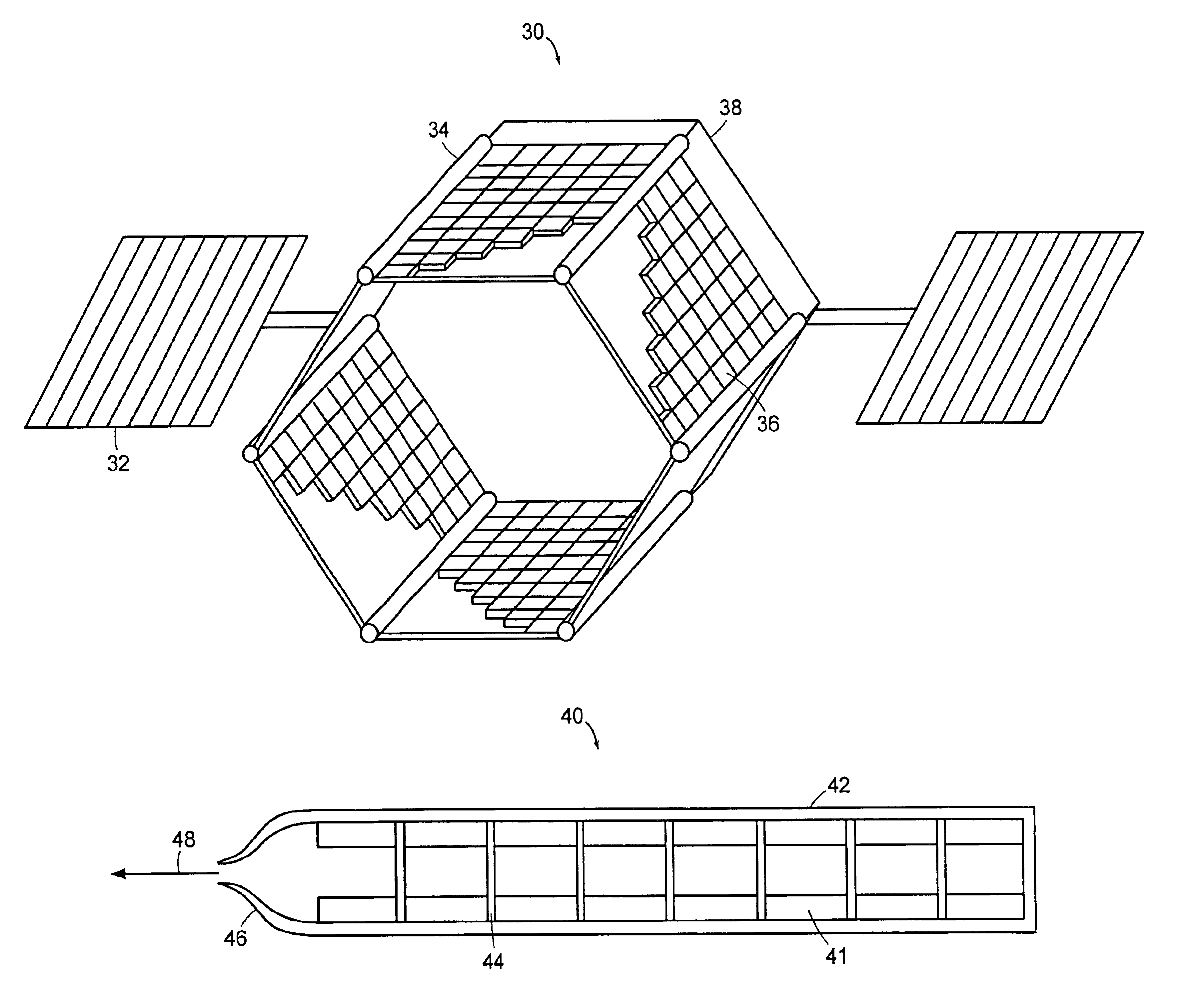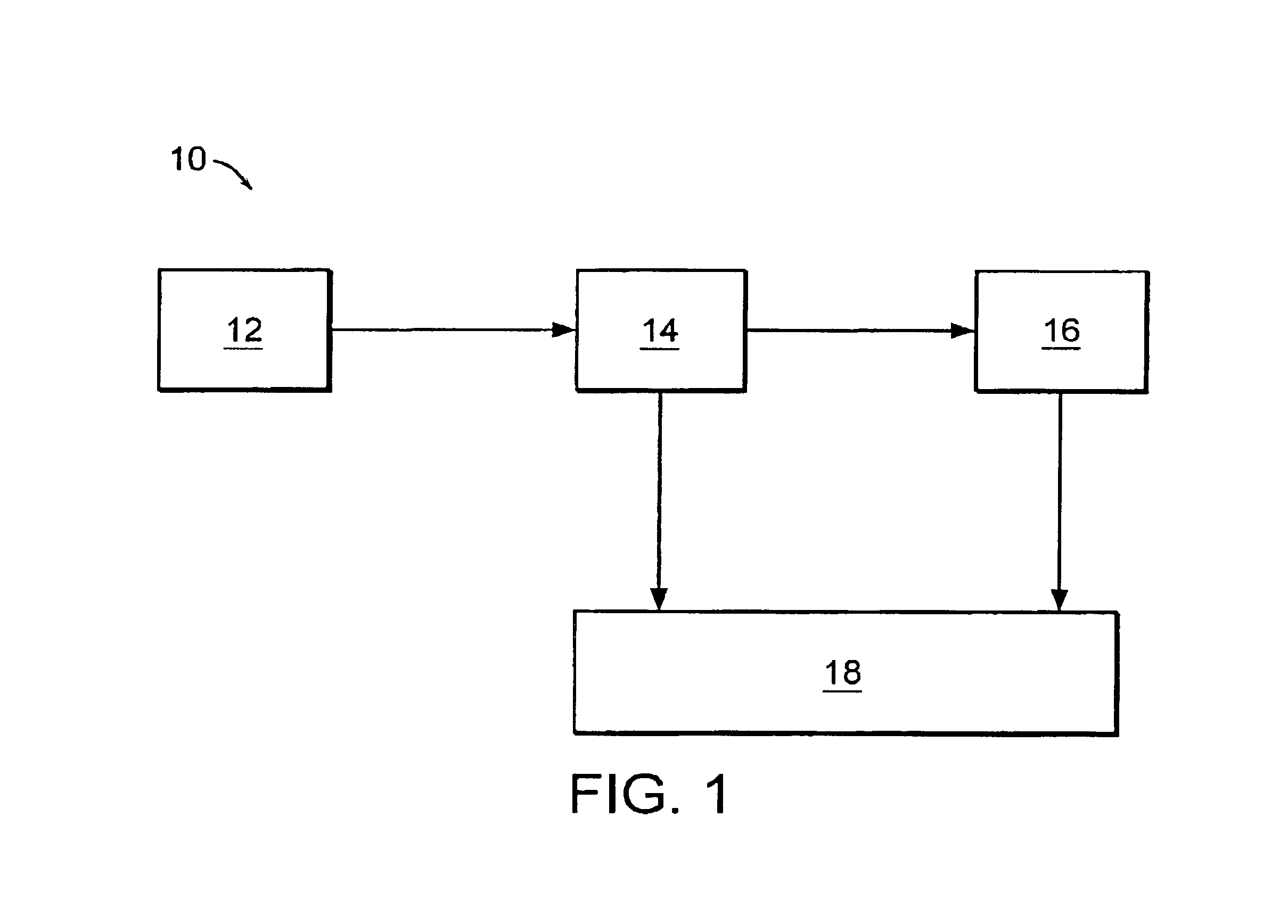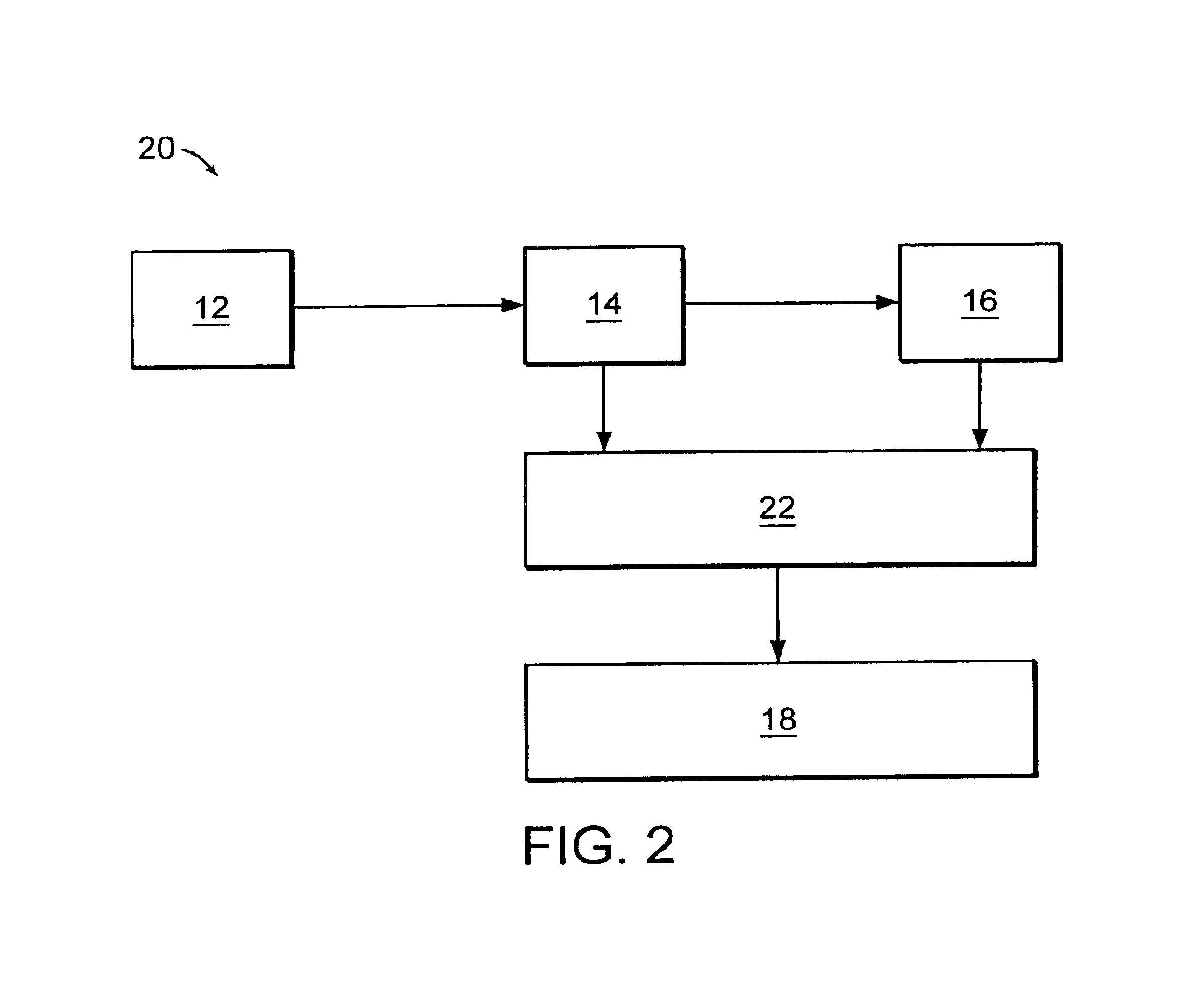Polyoxymethylene as structural support member and propellant
a technology of structural support and polyoxymethylene, which is applied in the direction of cosmonautic vehicles, machines/engines, explosions, etc., can solve the problems of limiting the payload weight that the vehicle is able to carry as well as its endurance, range and/or velocity, and the vehicle experiences relatively insignificant loads, etc., and achieves low coefficient of thermal conductivity, low cost, and good mechanical properties
- Summary
- Abstract
- Description
- Claims
- Application Information
AI Technical Summary
Benefits of technology
Problems solved by technology
Method used
Image
Examples
example 1
Fabrication of Cylindrical Component
[0108]A cylindrical component similar to that shown in FIG. 14 was formed by machining a commercially available rod of POM material 304 to produce center bore 306 and radial slots, into which longitudinal webs of reinforcement material 308 are inserted. Examples of suitable reinforcement material include carbon cloth or fiber within an epoxy or phenolic matrix.) The resulting reinforced POM rod was then cooled to a temperature of between about −10° C. to about 0° C. to induce shrinkage. Metallic sleeve 302 was heated above ˜100° C. to induce radial thermal expansion. The POM rod was then inserted into the metallic sleeve and the assembly cured at temperatures in the range of about 100° C. to about 150° C. for over an hour to allow consolidation of reinforcement material 308 with the surrounding POM matrix. A tight mechanical force fit of the POM rod within the metallic sleeve was thus accomplished. Optionally, the bond between the POM rod and the ...
example 2
Summary of Open Burning Results
[0109]An amount of POM-A and POM-B was warmed in the presence of various oxidants to measure melting, pyrolysis, and self-ignition points.
[0110]POM-A, combined with either N2O4, NO2, or air, melted at about 175° C. Pyrolysis began at about 235° C. POM-A, combined with either N2O4 or NO2, self-ignited at around 235-275° C., and at around 350-400° C. when mixed with air. These values are in line with known values, which cite a melting point of about 175° C., a pyrolysis point of between about 200° C. and about 400° C., and a self-ignition point with air in the range of about 323-375° C.
[0111]POM-B, combined with either N2O4, NO2, or air, melted at about 165° C. Pyrolysis began at about 215° C. POM-B, combined with either N2O4 or NO2, self-ignited at around 250-275° C. POM-B, combined with air, self-ignited at a temperature greater than about 350° C.
example 3
Mass Spectrometry Data of Thermal Decomposition Products
[0112]FIG. 15 shows mass spectrometry data for products (measured in μg) produced during the thermal decomposition of POM at various temperatures. The products include carbon monoxide, formaldehyde, and other compounds (such as water or carbon dioxide) that were formed in side reactions or were initially present as impurities in the reaction materials. The presence of hydrogen was inferred from the presence of carbon monoxide. The trial runs listed as 1-3 were conducted at a temperature of ˜400 C, those listed as 5-8 were conducted at ˜500 C, those listed as 10-12 were conducted at ˜750 C, and those listed as 14-17 were conducted at ˜1000 C. The data clearly demonstrates that at temperatures of 500° C. or less, the primary fuel product is formaldehyde. For decompositions at temperatures above ˜750° C. the primary fuel products are carbon monoxide and hydrogen.
PUM
| Property | Measurement | Unit |
|---|---|---|
| temperatures | aaaaa | aaaaa |
| density | aaaaa | aaaaa |
| operating temperatures | aaaaa | aaaaa |
Abstract
Description
Claims
Application Information
 Login to View More
Login to View More - R&D
- Intellectual Property
- Life Sciences
- Materials
- Tech Scout
- Unparalleled Data Quality
- Higher Quality Content
- 60% Fewer Hallucinations
Browse by: Latest US Patents, China's latest patents, Technical Efficacy Thesaurus, Application Domain, Technology Topic, Popular Technical Reports.
© 2025 PatSnap. All rights reserved.Legal|Privacy policy|Modern Slavery Act Transparency Statement|Sitemap|About US| Contact US: help@patsnap.com



